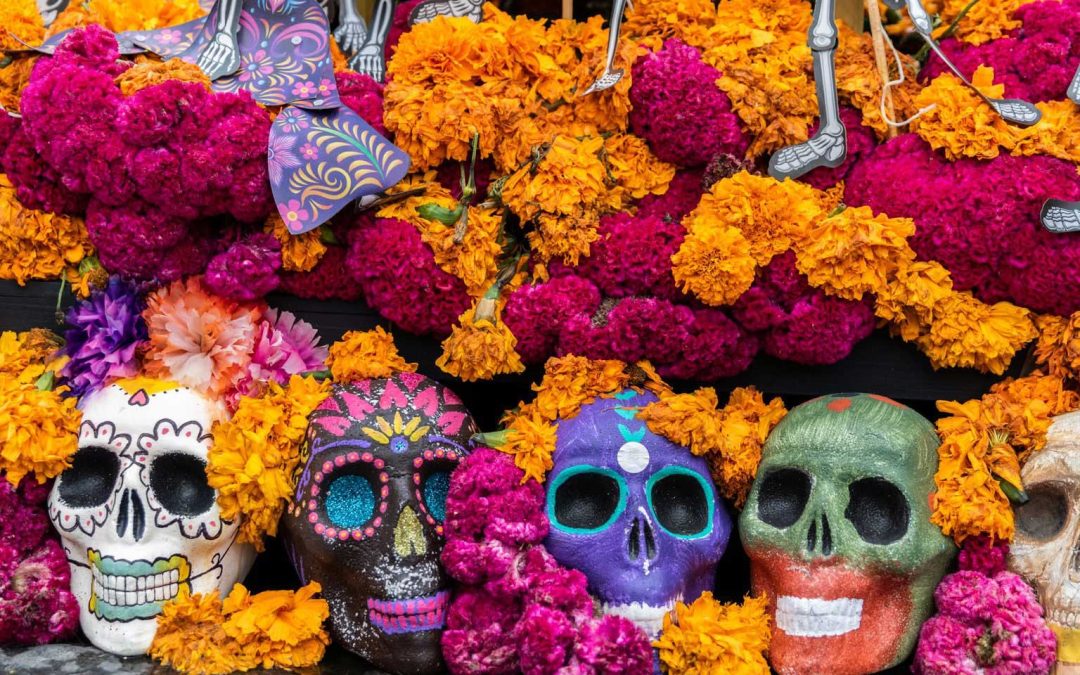A row of colorful skulls sits surrounded by marigolds and other flowers. Both have been longstanding parts of the imagery and altar decoration during the Day of the Dead, or Dia de los Muertos celebrated every Nov. 1-2. (Image courtesy of Getty)
October 2023
Cover Story
Honoring the dead
Dia de los Muertos has colorful traditions, history in both Mexico , U.S.
by Corbin Crable
Very soon, get ready to enjoy a holiday with colorful costumes, delicious food, and celebrations centered around spirits.
No, Halloween enthusiasts, not that one – the other one.
Dia de los Muertos, or Day of the Dead, is a holiday with traditions thousands of years old that began in what is now known as Mexico but whose influence has spread to countries throughout the world, including the United States. Celebrated Nov. 1-2 throughout Latin America, the holiday is designed to honor departed family members and loved ones. Among those who observe the holiday, it is believed that the spirits of those loved ones return to visit their families.
One of the largest components of the Day of the Dead is making gravesite offerings to the deceased. Family members will bring favorite foods and beverages to their loved one’s final resting place or at private or public altars (ofrendas) to nourish the spirit along its journey through the afterlife. Mexican women also will bake pan de muerto (bread of the dead), a sweet bread decorated with edible skulls made from dough, to be left at the gravesite. Many altars will also include flowers (such as marigolds, the flower most associated with the holiday) and scented candles, as it is believed that the fragrances will help guide the departed soul from the cemetery to their familial home.
For the living, in addition to paying tribute to their deceased family members, the day is filled with lots of music, dancing, food, and beautiful costumes.
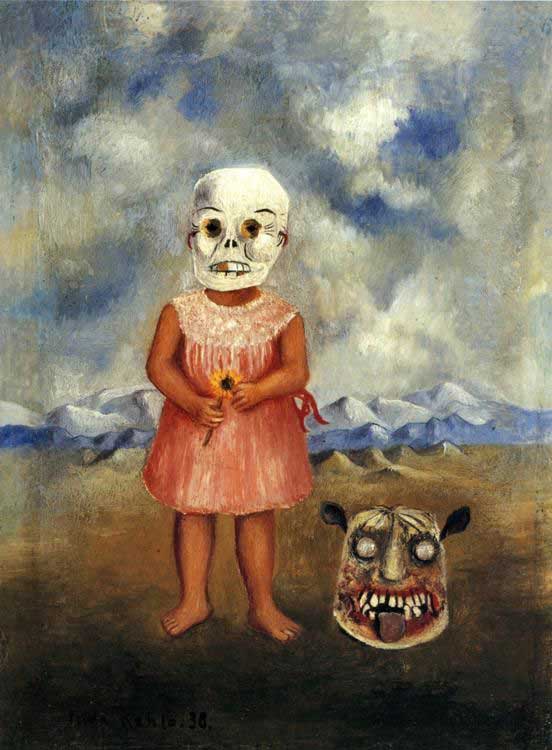
Girl With Death Mask
“Girl With Death Mask” by Frida Kahlo, 1938. (Image courtesy of Wilderutopia)
But first, a look back
The rituals associated with the Day of the Dead took root in Aztec and Mesoamerican cultures an estimated 3,000 years ago. In those ancient beginnings, the celebrations took place over the course of an entire month. With Spain’s brutal colonization of Latin America in 1519, however, the Spanish moved the holiday to coincide with the Catholic Church’s All Saints’ Day and All Souls’ Day, creating the tradition blended from indigenous and European celebrations to which we are accustomed today, according to an October 2022 article by Rebekah Mejorado of the Smithsonian American Art Museum.
Perhaps no other imagery is more linked to the Day of the Dead celebrations than the “Calavera,” or skeleton. Unlike those skeletons appearing in imagery associated with Halloween, the Calavera is not meant to frighten or startle the viewer; instead, they are figures associated with joy and celebration. The Calavera usually appears in Day of the Dead decorations and art as either a complete skeleton or only a skull – though many are made from clay and elaborately decorated, these skulls also can be edible, too, made from sugar.
“This face has a definite aesthetic: a skull, wearing a much-embroidered bonnet resplendent with flowers,” writes Simon Ingram in an October 2019 article in National Geographic. “This is La Calavera Catrina – the ‘elegant skull’ – often simply La Catrina.”
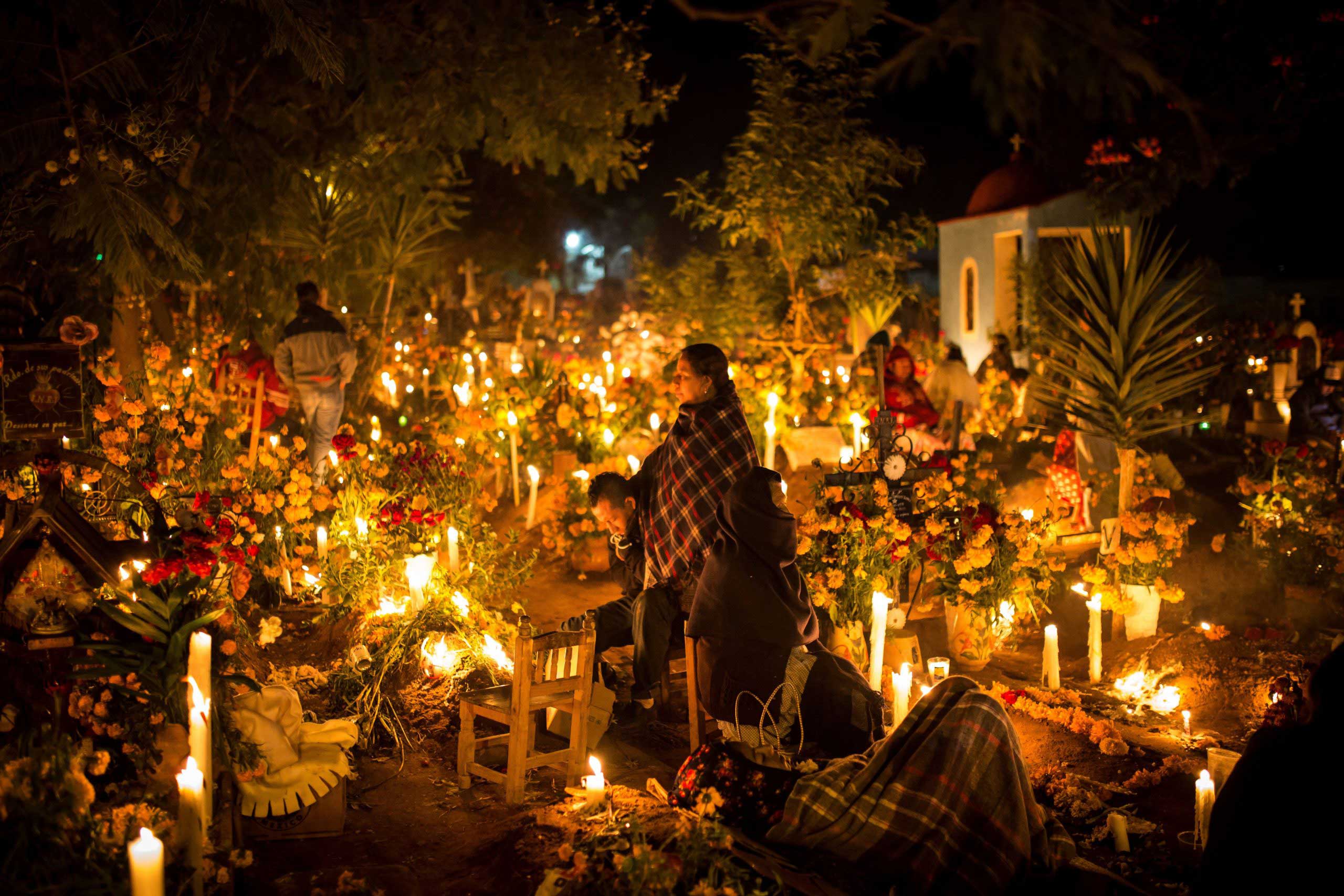
Candles illuminate a large public display
Candles illuminate a large public display for Dia de los Muertos in Mexico in 2021. (Image courtesy of upr.org.)
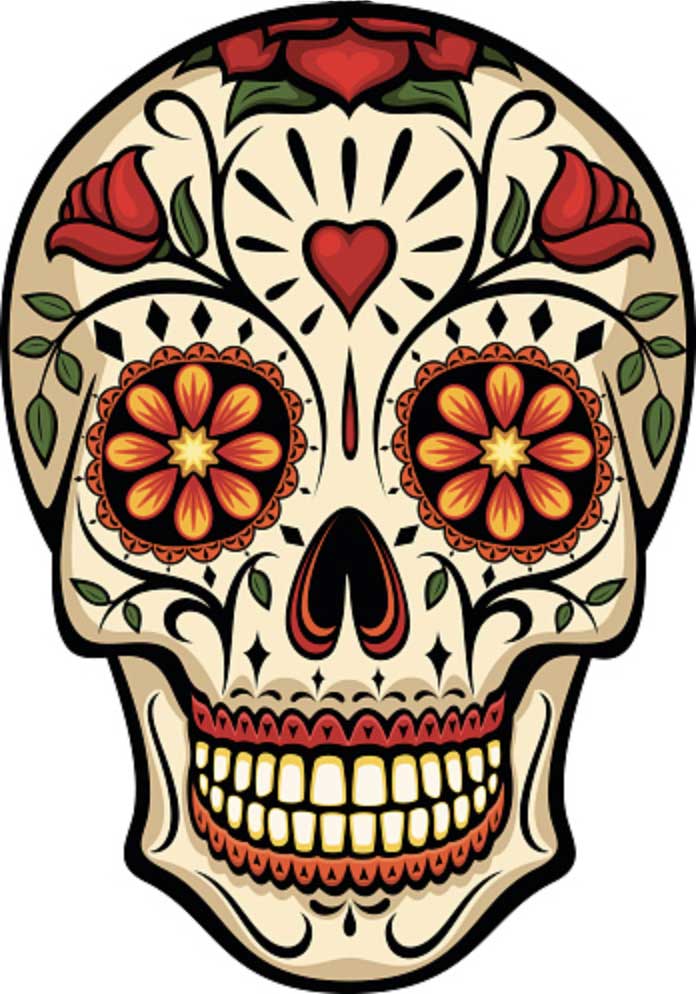
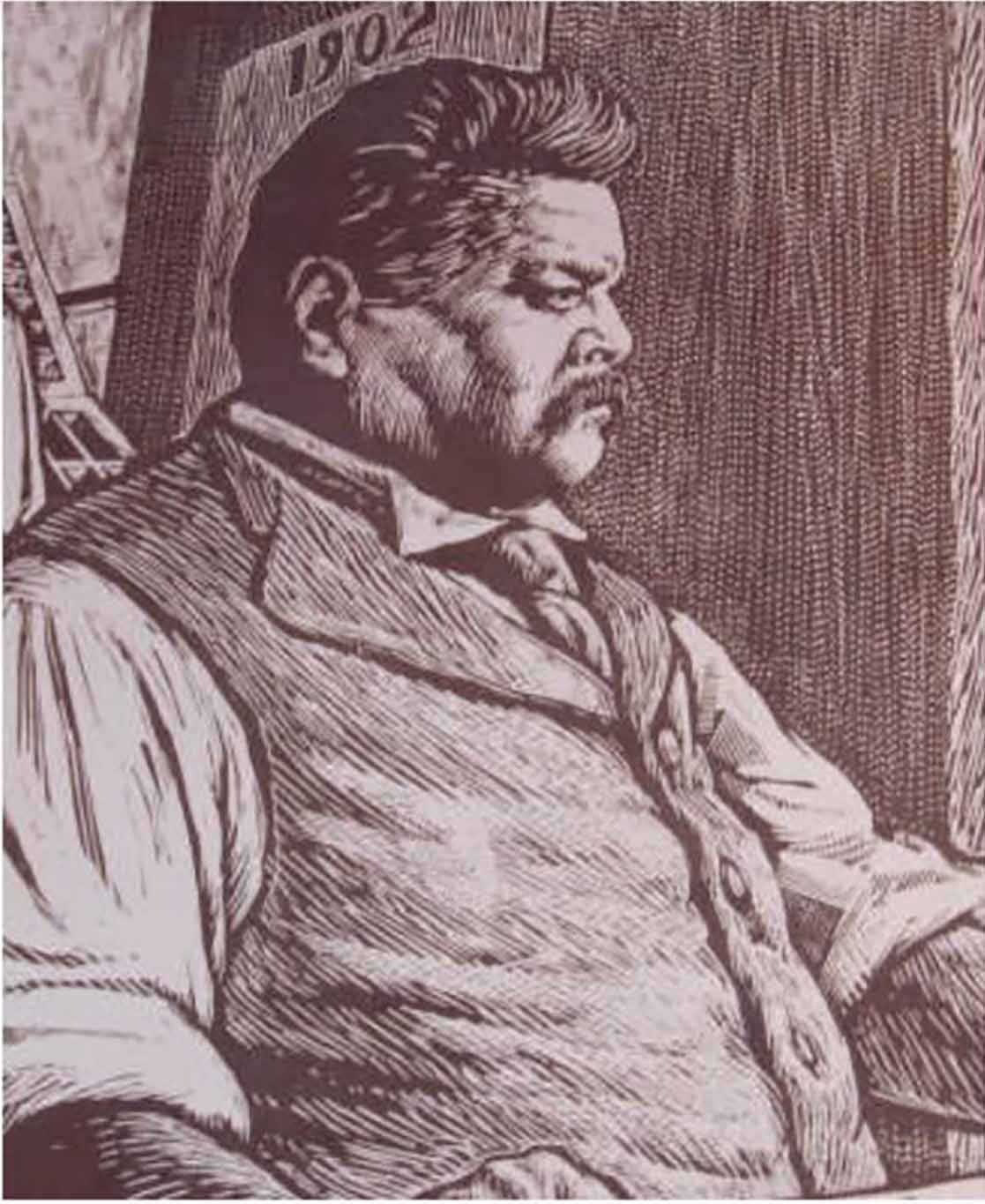
Jose Guadalupe Posada, the creator of La Calavera Catrina
Jose Guadalupe Posada, the creator of La Calavera Catrina, the exquisitely beautiful skulls we associate with the Dia de los Muertos holiday. (Image courtesy of de10.com.)
Death as the great equalizer
A Mexican artist, Jose Guadalupe Posada, can be credited with creating the modern image of La Catrina more than a century ago. In the beginning, Posada’s figures weren’t solely associated with the holiday; he drew them to represent everything from “national tragedies, to current events and figures, to historical incidents and literary characters,” according to the National Geographic article.
“Posada’s sketches were sometimes prophetic-apocalyptic, such as that published in 1899 depicting a volcanic eruption, the foreground scattered with a chaotic funerary scene of Calaveras – including one rising from a grave.
The reduction of every person to bones, no matter of time, place, class or deed gave Posada’s images a homogenizing quality, the apparent message being ‘underneath, we are all the same.’”
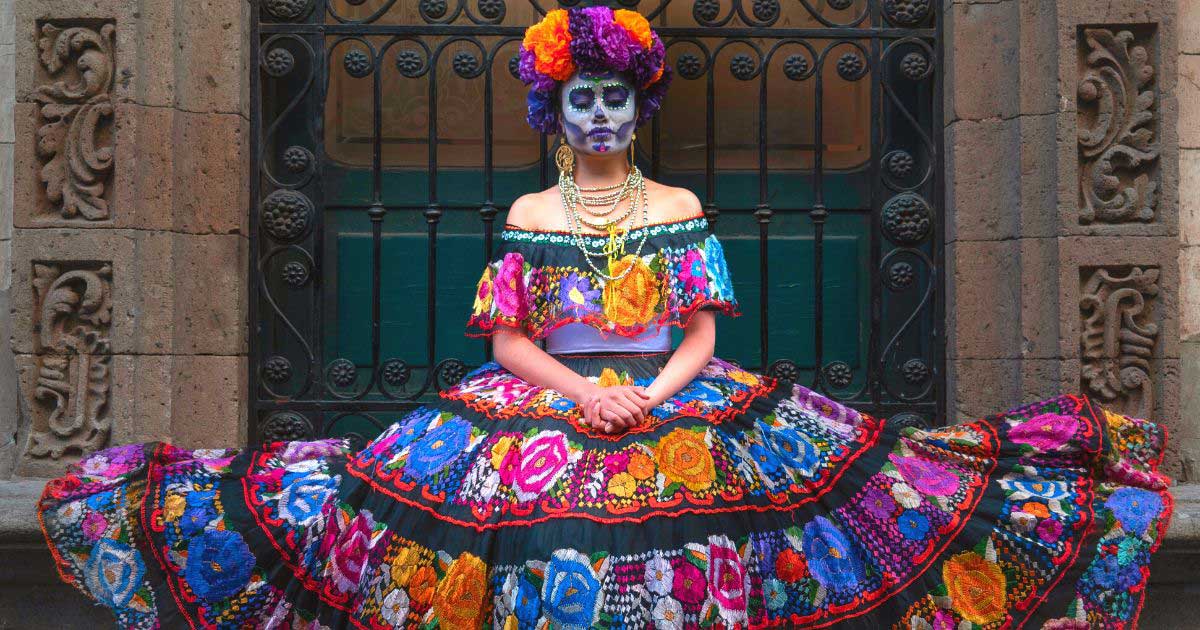
The vibrant color of Dia de los Muertos costumes contrasts with the faces painted like skulls
The vibrant color of Dia de los Muertos costumes contrasts with the faces painted like skulls, to make a combination that is truly eye-catching. Image courtesy of travelmexicosolo.com.
It’s only in the past 100 years that La Catrina has been incorporated into the joyful celebrations of the Day of the Dead, appearing not just in sugar skulls, but also in elaborately colorful costumes adorned with flowers and intricate designs. It can also still be found outside of Dia de los Muertos and in other places, such as the work of contemporary artists like Mexico’s Frida Kahlo and her husband, muralist Diego Rivera. Rivera’s 1947 mural Dream of a Sunday Afternoon, which appears in the historic center of Mexico City, depicts Posada’s Calavera Catrina as the central figure in the massive work, according to The Grace Museum in Abilene, TX.
The word “Calavera” also has a dual meaning when one refers to the Day of the Dead. Now associated with skulls and skeletons, in the 18th and 19th centuries, the word used to refer to a short, humorous poem, published on one’s tombstone to “poke fun at the living,” according to National Geographic. Today, the practice continues, with Calaveras being shared in both print and broadcast media.
Bring paper to the party
Another popular element of Day of the Dead festivities can be found in papel picado, or ‘pierced papers,’ colored tissue paper pierced with intricate designs using a knife and chisel. You can see them strung up high over streets and on altars; because they are made of tissue paper, these decorations represent the fragility of life. The themes presented in papel picado aren’t just limited to Day of the Dead celebrations, however. They also make colorful appearances for celebrations during Easter, and Christmas – even quinceaneras, baptisms, and weddings.
“Most papel picado is machine-cut today in order to mass-produce these detailed decorations, but only a few artists still continue to cut sheets by hand using a variety of chisels and knives to complete up to 50 sheets at a time,” according to California’s Chapman University.
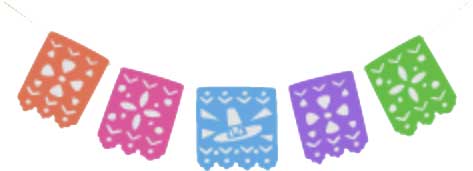
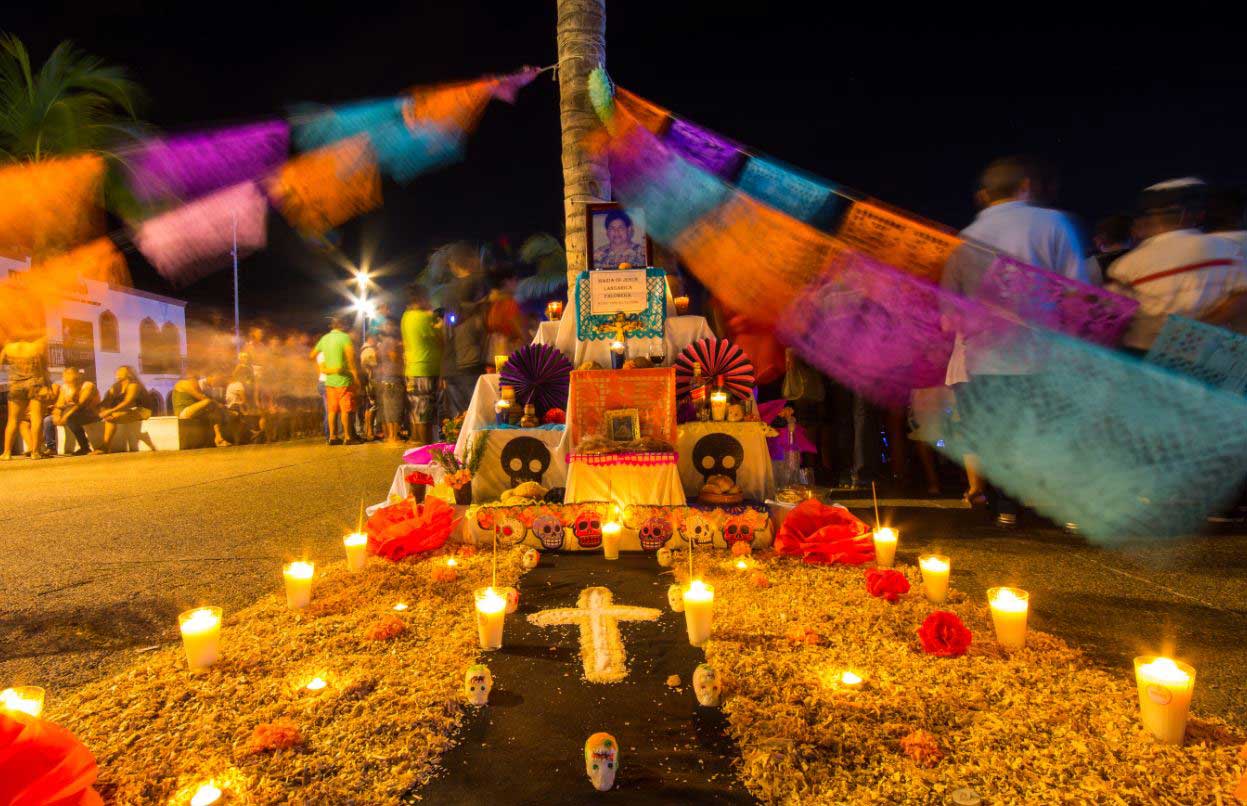
A public altar erected for Dia de los Muertos is decorated with papel picado
A public altar erected for Dia de los Muertos is decorated with papel picado or tissue paper decorated with intricate designs. (Image courtesy of Fairmont Mayakoba)
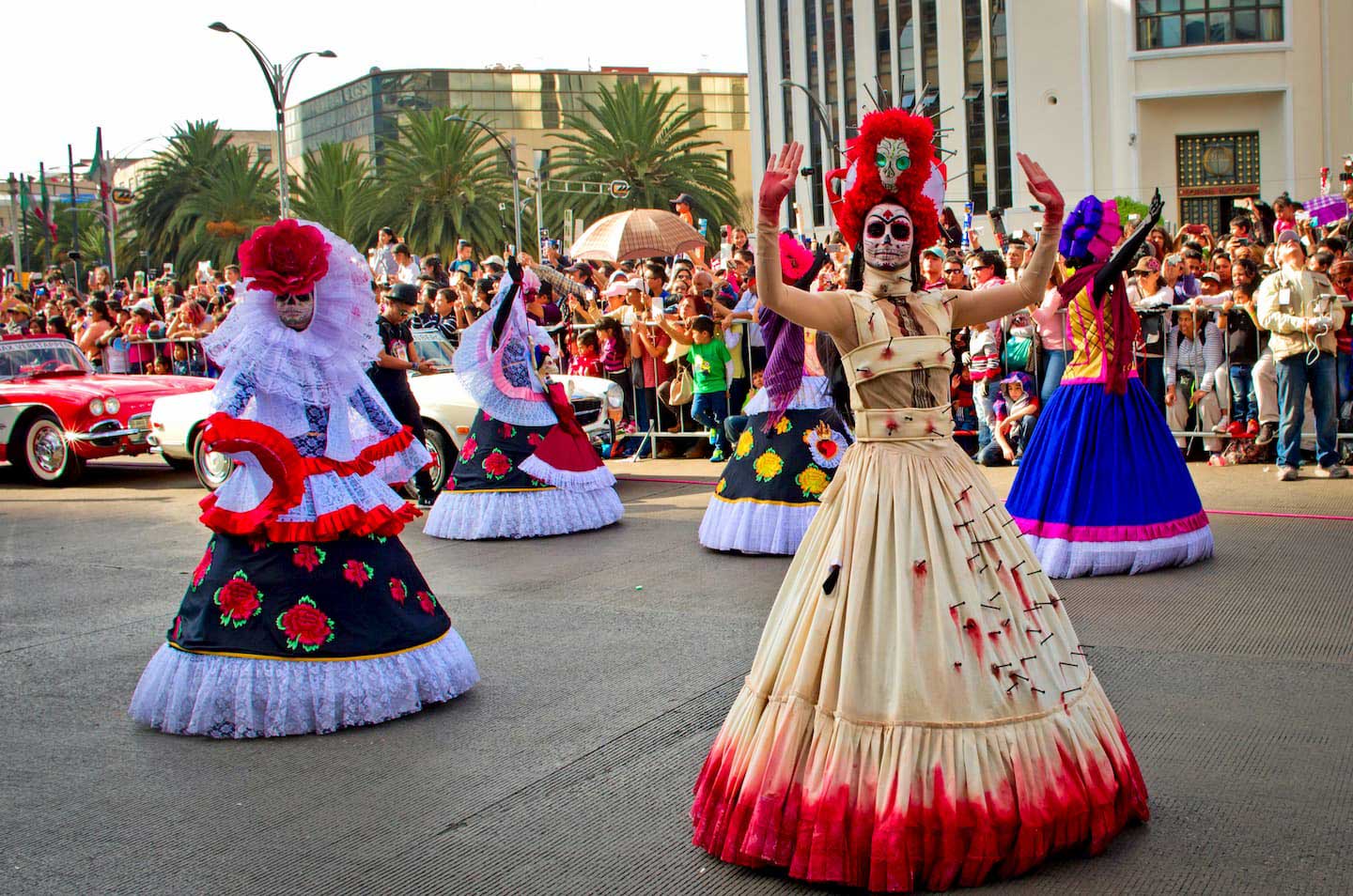
Dia de los Muertos parades
Dia de los Muertos parades occur around the world every year, with participants dressed in elaborate costumes. (Image courtesy of Facebook)
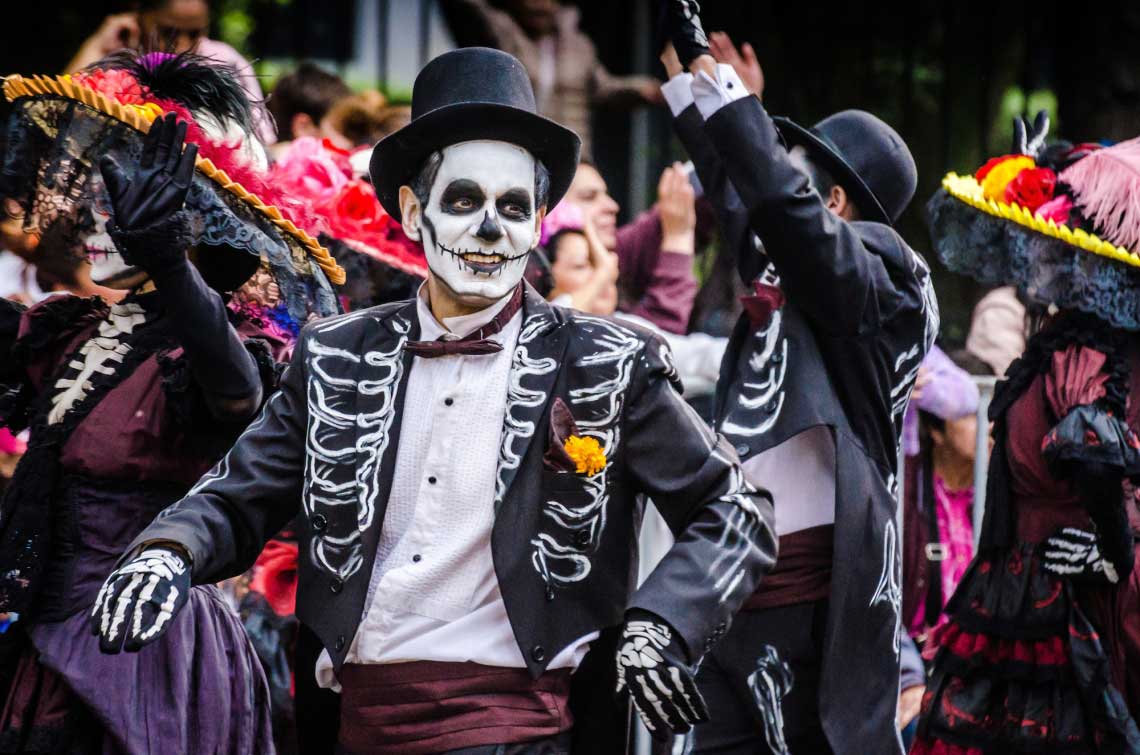
2018 Dia de los Muertos parade in Mexico City
A participant in a 2018 Dia de los Muertos parade in Mexico City. (Image courtesy of The University of Arizona / Shutterstock)
It’s not ‘Mexican Halloween’
Though Day of the Dead festivities take place across the globe, here in the United States, it appears that celebrations of the holiday are especially grandiose the closer the state is in physical proximity to Mexico. States with high numbers of Mexican immigrants, including California and Texas, host themed parties every year, and other states with large celebrations include Louisiana, Florida, and even Illinois.
Closer to home, the holiday is still alive and well in states such as Missouri, where Kansas City’s Nelson-Atkins Museum of Art hosts an annual altar decorated by local artists and created in collaboration with local students, the local Mexican Consulate, and the Mattie Rhodes Center, a nonprofit organization offering wraparound services to individuals and families in Kansas City’s Hispanic community.
No matter where you choose to join the party and pay tribute to your dearly departed loved ones, just make sure not to ever call Dia de los Muertos “The Mexican Halloween.” Nothing could be further from the truth.
“Although dwindling in number, there are still many Americans who have never heard of Día de los Muertos (or Day of the Dead). Those who have heard of it, but don’t really know much about it, sometimes refer to it as ‘Mexican Halloween,’” according to an Oct. 30, 2017, article on USAToday.com. “While Halloween and Day of the Dead do share common roots, they are totally different holidays.”
To learn more about Dia de los Muertos, visit The Smithsonian Institute’s Mexican Museum at www.mexicanmuseum.org/dia-de-los-muertos.
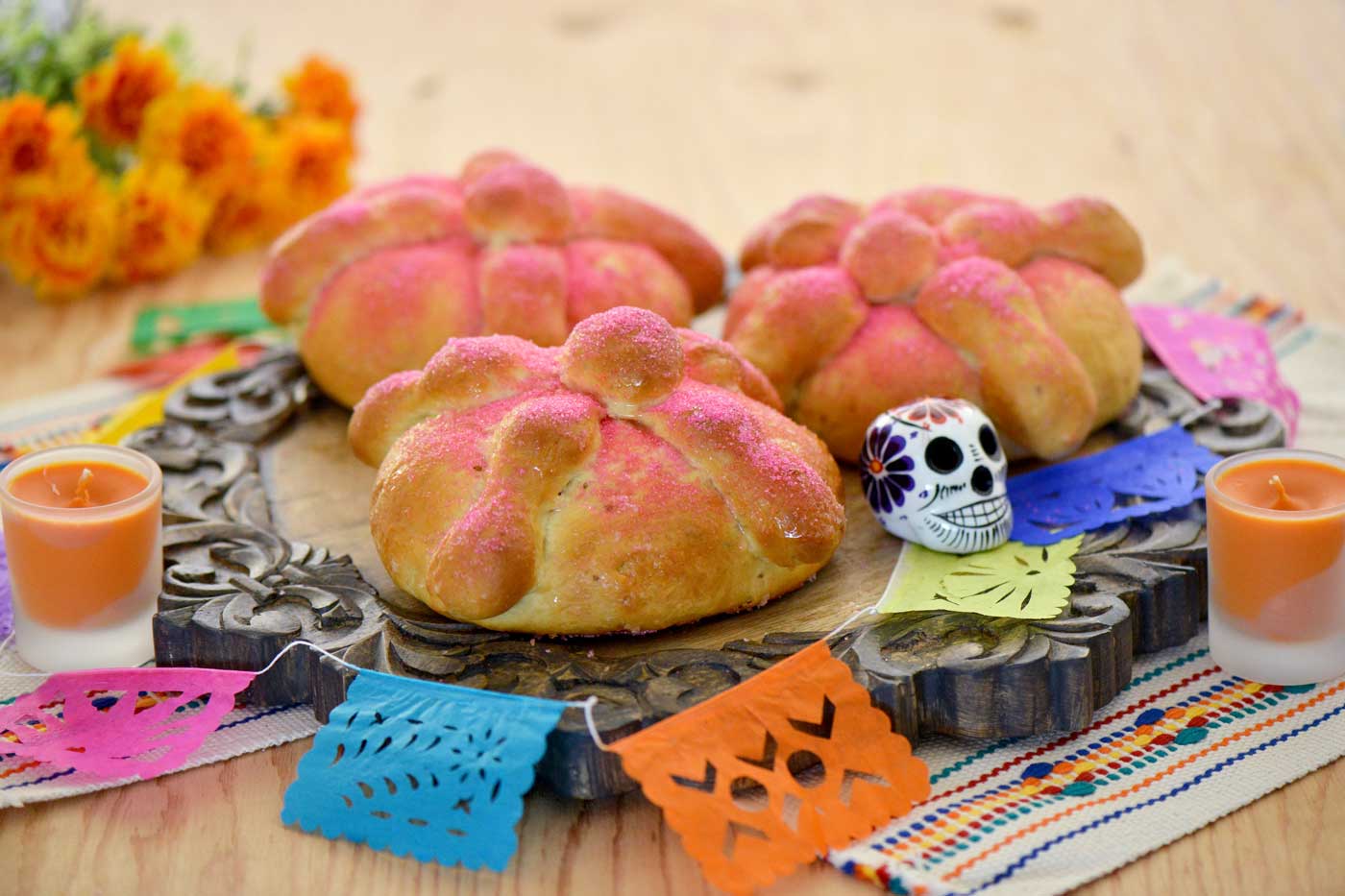
Pan de muerto
An example of pan de muerto, or bread of the dead. (Image courtesy of Nibbles and Bites)
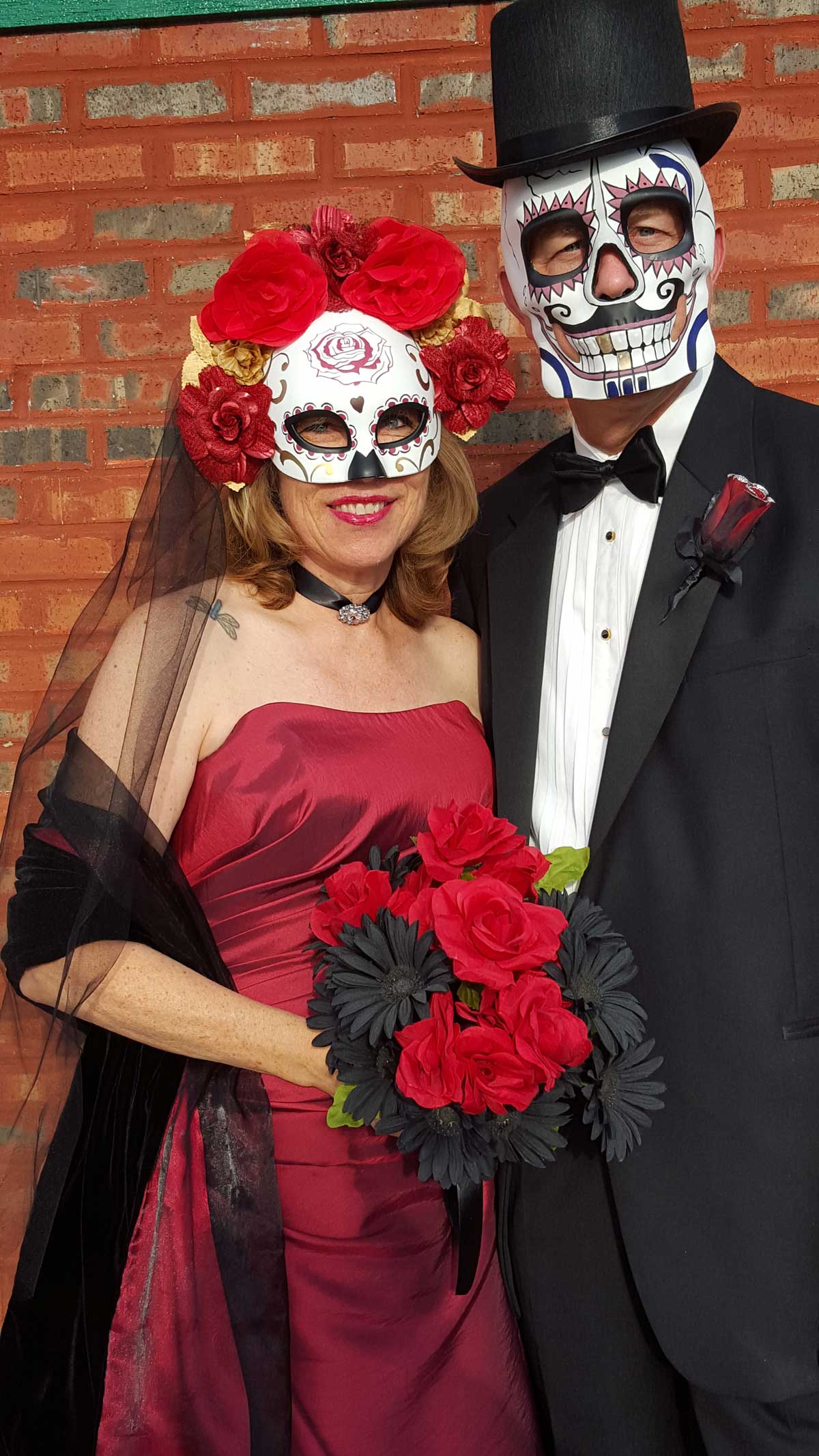
Big fans of Day of the Dead
Big fans of Day of the Dead, Publisher Patti Klinge and her husband Brian celebrated one year as a bride and groom. (Image courtesy of Patti Klinge)


